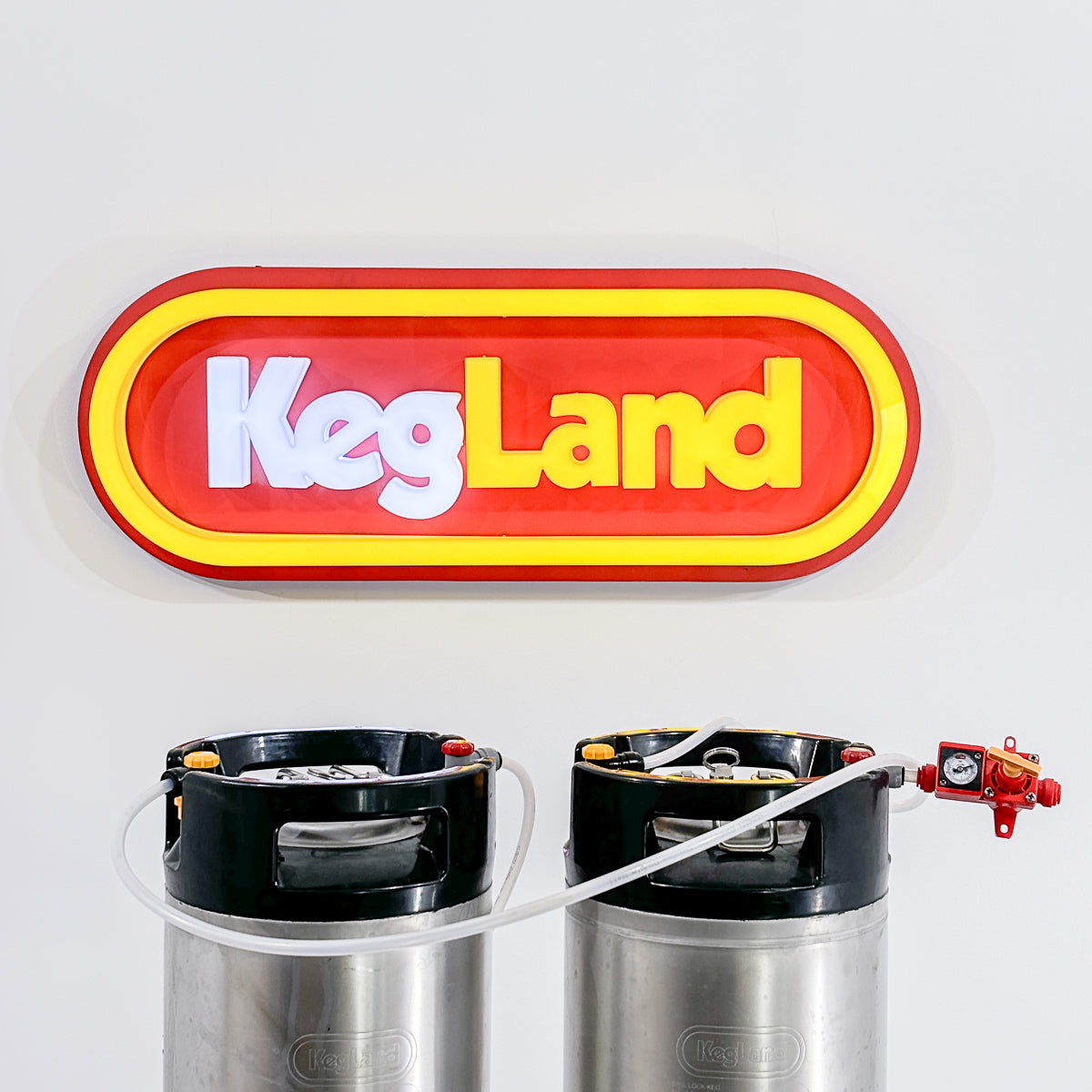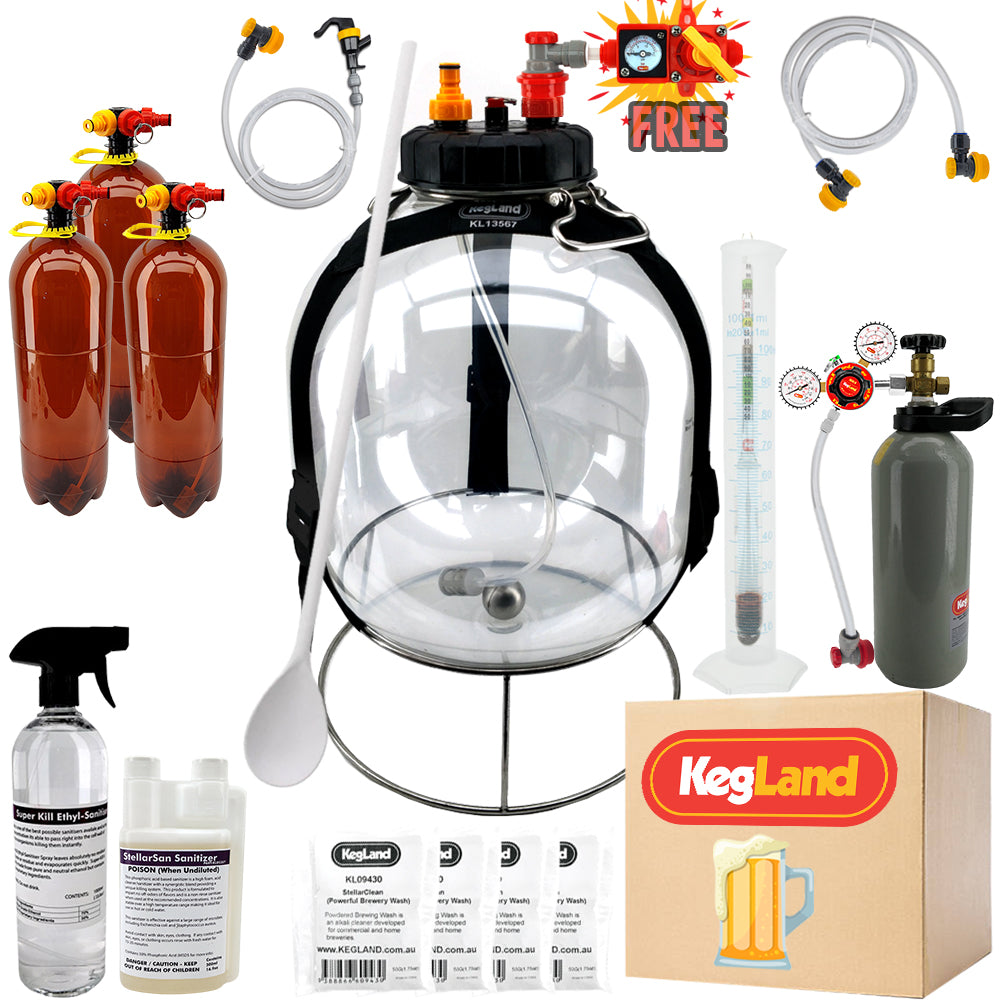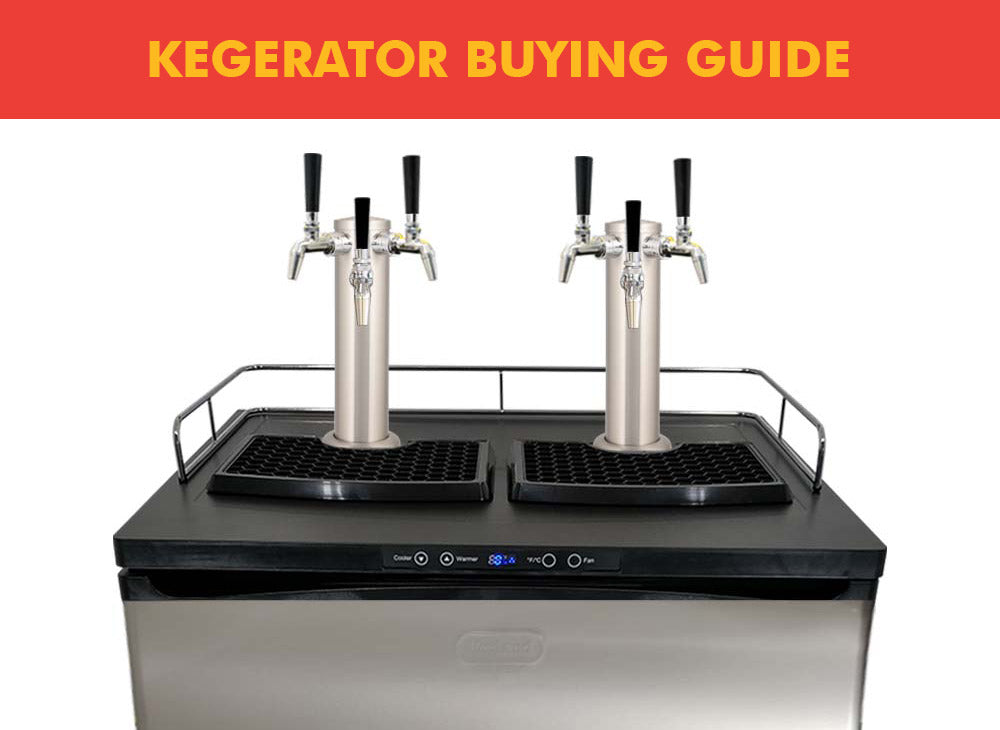We are all about pressure at KegLand. Becuase Kee likes to crack the whip!
Nah, he's actually as chill as he seems.
But we do strive to put out the best products that can can to improve your home brewing and this great hobby.
One of the key facets is our commitment to pressure fermentation, and (maybe even more importantly) pressure transfers.
The joys of pressure fermentation are covered in depth in this article, so I won't go into to much more detail.
Suffice to say that fermenting under pressure allows to you ferment faster and cleaning. Basically, 24 hours after pitching the yeast, let pressure build up using our spunding valve to around 12-12psi, and then start cranking the temperature (up to around 24°C is a good point to aim for).
However, in many ways where pressure fermenting under pressure really shines is when it is time to transfer your beer from the fermenter to the keg. With a pressure fermenter and 19L corny keg, it is fantastically easy to do a closed, O2 free pressure transfer.
Lets go through the process, step by step.
1: First, you want to clean and sanitise your keg(s). This is pretty straightforward - clean with PBW and rinse, then sanitise. There's more detail about cleaning here if you are interested.
2: Sanitise and purge your kegs. This is important, and proper sanitation/purging here will make a big difference.
First, once the keg is cleaned and rinsed, completely fill the keg with a no-rinse sanitiser such as StellarSan mixed to the correct dilution (1.5ml per litre).
Invert the keg for 120 seconds, then put the right way up to make sure that all surfaces some into contact with the sanitiser.
Now, hook the keg up to CO2 using your CO2 cylinder and regulator. Set the regulator to about 10 psi - this doesn't need to be exact. Pull the PRV a couple of times - this helps purge the very small amount of head space of O2.
Then, you need to use CO2 to push the sanitiser out of the keg. Using a CO2 to displace a keg full of liquid is vastly superior to simply purging an empty keg with CO2, as gases tend to mix rather than displace.
You can simply have a liquid disconnect attached to a small amount of line, and empty the sanitiser down the sink. A better alternative is to transfer the sanitiser from one keg into another clean and empty keg! StellarSan will remain effective for several uses, so this is both economic and (especially if you have a few kegs) quite the time saver.
To do this, have a liquid tansfer line - a short (~1-1.5m) length of line with a liquid disconnect on each end - the Big Jumper is perfect!
A spunding valve is also super useful.
Add a small amount of pressure to the empty keg that we are transferring o - around 3-5psi is fine. This will help prevent excess foaming.
Then, put the spunding valve on the empty, pressurised keg. We want to set this to around 5psi.
Hook the keg we are purging up to CO2 at 10psi. Connect the two liquid post together using the liquid transfer line.
With 10spi in the full keg, and using the Spunding Valve to maintain 5psi in the empty keg, the pressure differentil will push sanistiser from one keg to the other, leaving you with an empty, purged of O2 and pressurised keg, perfect for tranferring your finished beer!
Note - if you don't have a spunding valve you can simply turn the PRV on the empty keg to prevent pressure build up. This can lead to StellarSan foam geting sprayed out though!
There are a couple of ways to stop the transfer automatically to minimise excess CO2 use.
You can use the Flow Stopper on the gas post of the target keg.
A FOBS (Foam On Beer) detector can also be repurposed to detect Sanitiser rather than beer - check out this video:
Otherwise, simply keep an eye on the process - it only takes a few minutes and sure beats cleaning and sanitising a bunch of bottles!
Now, this exact same procedure is used when transferring your finished beer from the fermenter to the keg. To do this, you will need a pressure capable fermenter such as the 30L FermZilla All Rounder. A floating dip tube setup is ideal as that allows you to draw beer from the top, allowing for a potentially cleaner transfer into the keg.
Once fermentation is done (and ideally after a cold crash) hook your fermenter up to CO2 at around 10psi.
Remembering that your keg is purged, sanitised and pressurised, we can attach the spunding valve to the keg and set this to vent at around 5psi. The exact amounts don't really matter, but it is important to have higher pressure in the fermenter than the keg.
Once the pressures are set, simply attach the liquid line from the liquid post of the fermenter to the liquid post of the keg. The pressure differential means the transfer will begin right away!
Keep an eye on the spunding valve and adjust as required - remeber we want to have less pressure in the keg than the fermenter, so that the tranfser continues. You can use the Flow Stopper to stop the process automatically, or simply put the keg on a good set of scales - stopping the transfer when it weighs 18-18.5kg is perfect for a full but not over full keg!
If you have performed a cold crash, you will also most likely see a pretty clear condensation line of the keg thaqt can be used as a guide to when to stop the transfer. If you remove the spunding valve from the gas post when the condensation line gets close to the top of the keg then the trasnfer will stop as soon as the liquid level reaches the gas dip tube.
So there you have it! Fuly closed, pressure transferring into a purged keg for maximum beer freshness, lobgevity and flavour - it literally couldn't be easier!



